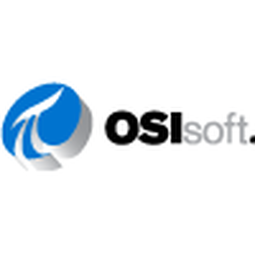
- Analytics & Modeling - Predictive Analytics
- Analytics & Modeling - Real Time Analytics
- Functional Applications - Enterprise Asset Management Systems (EAM)
- Functional Applications - Remote Monitoring & Control Systems
- Sensors - Flow Meters
- Sensors - Level Sensors
- Cities & Municipalities
- Business Operation
- Leakage & Flood Monitoring
Every year, spring rains and snowmelt pour into the rivers and reservoirs that feed the City of Calgary’s water supply. As a result, downtown businesses and residents are faced with unpredictable floods that could do millions of dollars of damage. The City of Calgary turned to the PI System for a data-driven approach to predicting and managing flooding.
Both the Bow and Elbow rivers flow through Calgary’s borders and provide fresh water to the system. These rivers carry the runoff, rainfall, and snowmelt from nearly 9,000 kilometers of land and the water is collected in two primary reservoirs managed by the City of Calgary. To ensure a safe, consistent, supply of water for its customers, the City of Calgary must keep a close eye on both the quality and quantity of water in these rivers and reservoirs. One of the biggest challenges in doing so is the region’s annual floods. Each year, between May and June, snowmelt, runoff, and rainstorms cause the water levels in the rivers to increase substantially. Preparing for flood-level waters is part of the utility’s annual plans, but predicting when, precisely, they would occur was another matter. Water tables can change quickly and the utility must balance flood risks against continuing to meet user demand and maintaining reservoir levels and water quality. During a flood event, the utility is faced with a surge in water volume through its system. Before water reaches the reservoirs, it must be treated and the sudden increase in volume caused by the floods often overwhelmed the treatment plants, resulting in quality issues. Furthermore, City of Calgary lacked timely information that would let it reduce reservoir volume in advance of a flood. As a result, emergency response often struggled to respond as flood waters reached downtown. The resulting damages — including residential and commercial insurance claims, water quality issues, system downtime, and regulatory fines — could total in the millions. To reduce the impact of floods on its customers and its business, City of Calgary, turned to the PI System.
City of Calgary had been using the PI System to collect real-time data about the status and performance of its entire water treatment and distribution network, including five water and wastewater treatment facilities and more than 200 distributed field devices. City of Calgary decided to expand its PI System to monitor the watershed that feeds the municipal water system and capture information such as river water heights, reservoir water heights, flow rates, and rainfall. This new data allowed City of Calgary to monitor the watershed in real-time and better predict potential floods. Today, City of Calgary operations, maintenance, engineering, planning, • Seasonal floods were a regular but unpredictable occurrence. • First responders had no direct access to data, slowing response time and increasing costs. • Seasonal floods often led to water quality issues and could cause damages that cost millions of dollars. • PI System collects upstream river flows and rainfall data. • First responders have direct access to the PI System and can monitor river levels. • PI System enables better water-quality reporting. • Calgary can better predict seasonal water surges and take preventative measures to prevent flooding and potential damage. • First responders get advanced notice of potential flooding and can response quickly. • Water quality improved and regulators are better informed. and enterprise users can see precisely how much water is in the system from river to reservoir to pipe to sewer using their PI System analysis and visualization tools.

Case Study missing?
Start adding your own!
Register with your work email and create a new case study profile for your business.
Related Case Studies.

.png)











